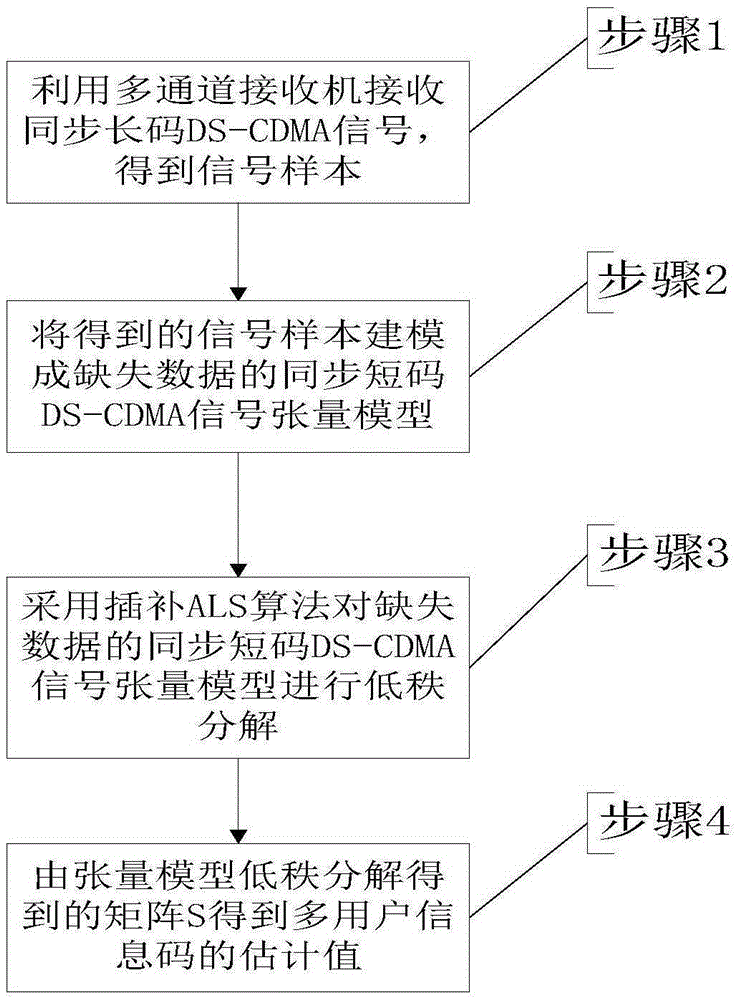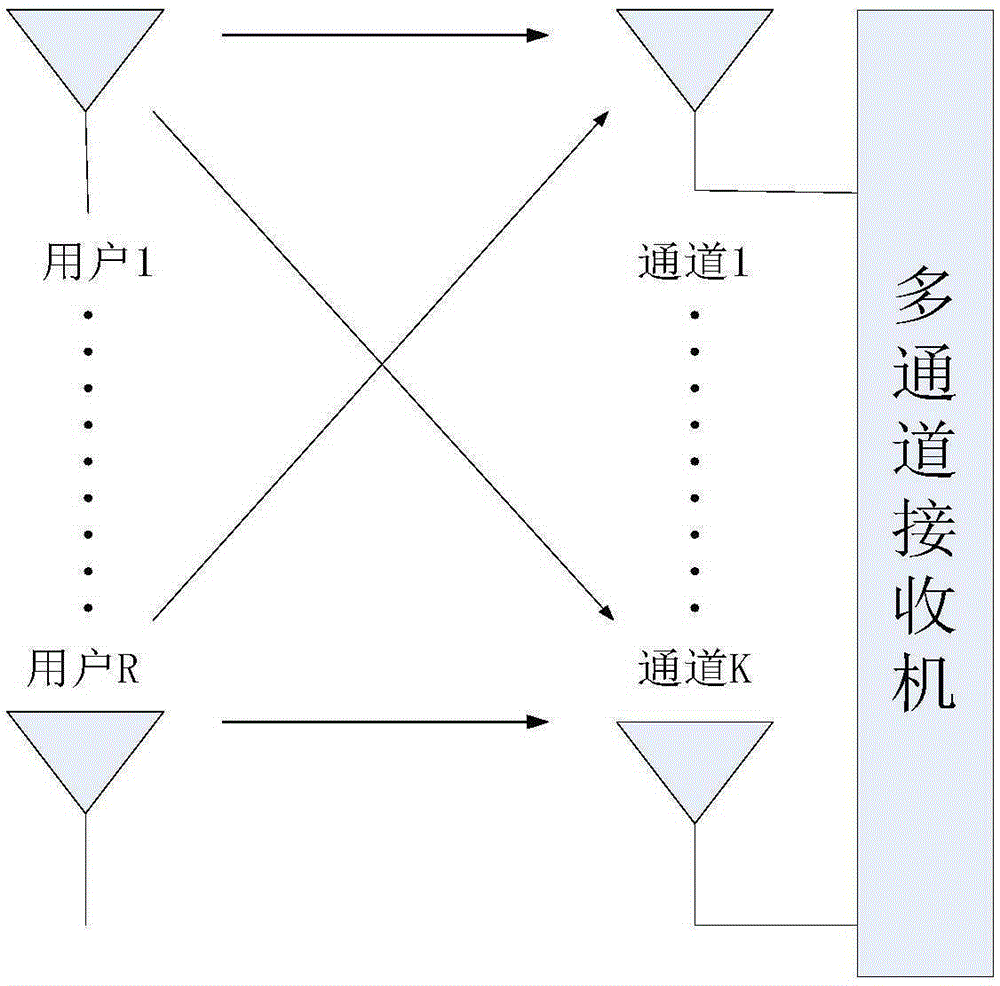Long code DS-CDMA signal blind separation method based on tensor low-rank decomposition
A DS-CDMA, blind separation technology, applied in the field of blind despreading, can solve the problems of long signal samples, unsatisfied, irrelevant information code sequences, etc., to achieve the effect of good performance
- Summary
- Abstract
- Description
- Claims
- Application Information
AI Technical Summary
Problems solved by technology
Method used
Image
Examples
Embodiment 1
[0037] In the case that the number of channels is fixed, the bit error rate of the information code matrix with different numbers of users is simulated with the change of SNR (SignalNoiseRate, signal-to-noise ratio).
[0038] Such as figure 1 Shown, the present invention realizes synchronous long code DS-CDMA signal blind separation method and comprises the following steps:
[0039] Step 1: Using as figure 2 The synchronous long-code DS-CDMA signal intercepted by the shown multi-channel receiver is estimated to obtain the code rate, spreading factor G and spreading waveform cycle L. This implementation assumes that G=30, L=63, and the fixed signal sample length N =50×L=3150, the number of channels is K=4, the number of users is R=3 and R=4, and the signal-to-noise ratio SNR changes from -10dB to -2dB. The signal intercepted by the kth antenna can be expressed as
[0040] Among them, a k,r is the receiving gain of the kth channel to the rth user signal, a random number i...
Embodiment 2
[0057] When the number of users is fixed, the bit error rate of the information code matrix with different channel numbers is simulated with the change of SNR (SignalNoiseRate, signal-to-noise ratio), and compared with the cooperative communication under the same situation (in cooperative communication, the antenna Gain matrix A and user spreading sequence matrix H are known, through the formula User information code matrix can be obtained). In this implementation, the number of users is fixed at R=3, the number of channels is K=3 and K=4, and other conditions are the same as in Embodiment 1. Carrying out 1000 Monte Carlo experiments, the finally obtained information code matrix bit error rate versus SNR curve is as follows: Figure 8 shown. It can be seen from the figure that the blind separation method proposed by the present invention has good performance in the case of low signal-to-noise ratio, and the bit error rate decreases with the increase of the number of channel...
PUM
 Login to View More
Login to View More Abstract
Description
Claims
Application Information
 Login to View More
Login to View More - R&D
- Intellectual Property
- Life Sciences
- Materials
- Tech Scout
- Unparalleled Data Quality
- Higher Quality Content
- 60% Fewer Hallucinations
Browse by: Latest US Patents, China's latest patents, Technical Efficacy Thesaurus, Application Domain, Technology Topic, Popular Technical Reports.
© 2025 PatSnap. All rights reserved.Legal|Privacy policy|Modern Slavery Act Transparency Statement|Sitemap|About US| Contact US: help@patsnap.com



